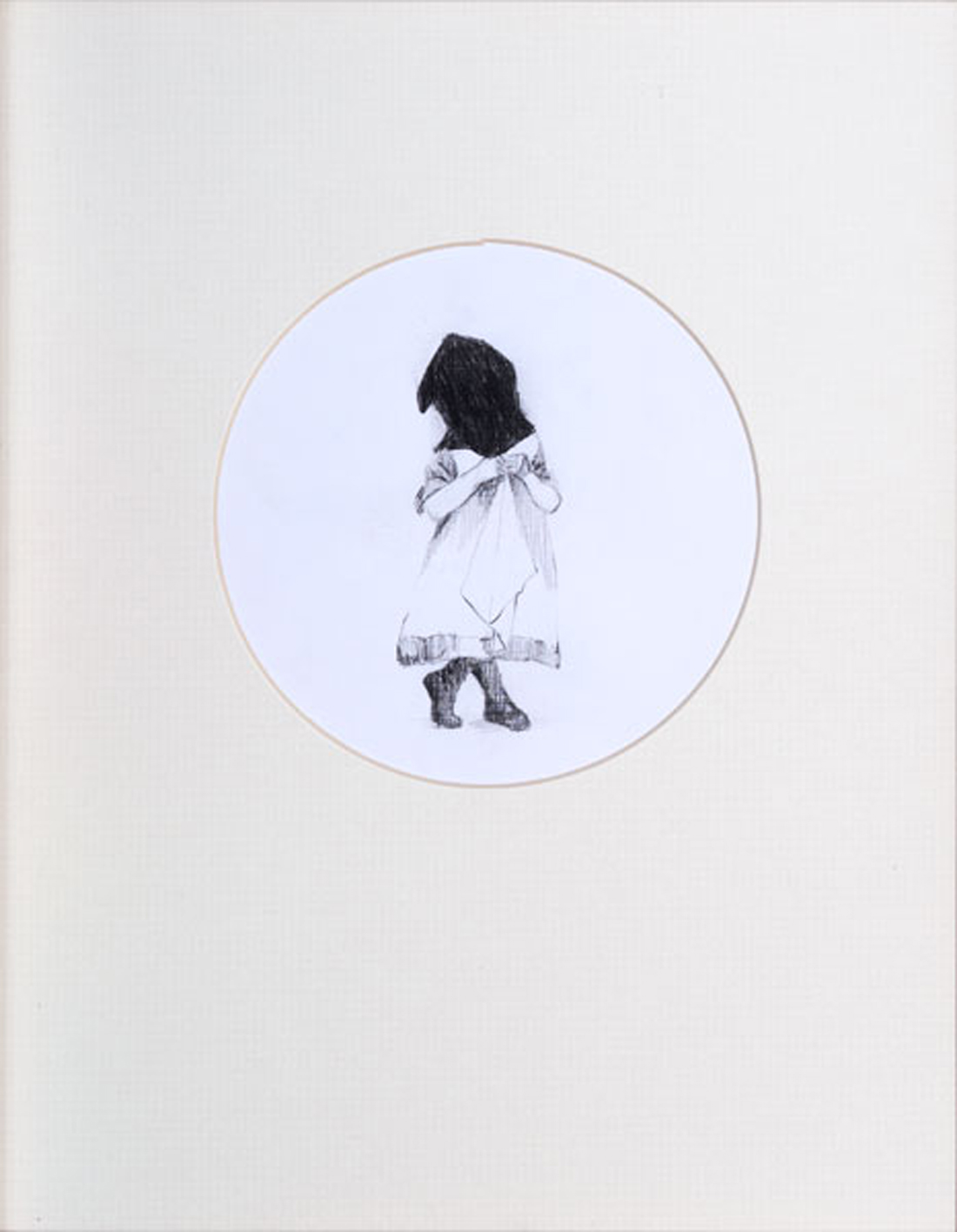spheres and female executioners

Pencil, pigments, papers and an industrial display of acrylic; attraction, light and color. Meticulously, Sofía Echeverri applies multiple pantone colors to indiscernible, blurred places—places that have lost all colorfulness and illusion. Materiality utilized, color and chiaroscuro in contrast like musical notes of a hidden madrigal. A formation of constellations of colorful circles that, combined, permit us to see the music. Also, the images in pencil interrupted by carbon fields keep us from seeing the faces. Her pieces are synesthesias. Synesthesia built with the goal of unsettling the viewer in its/his/her aesthetic journey, completed at the moment of contemplation, a result of long, pleasant hours of action and productive reflection, habitable outside of time. The time of the creation of a hedonistic work.
In its forms, thought is not separated from the body that contains it; the sensations that the material evoke are, at once, body and mind. In the words of Michel Onfray, reason is corporal. The journey is completed in a phronesis, in thought and emotion united, working in unison like a censorial emitter—rational, and provoking the discovery of an enigma, the enigma of the female executioner. Why are the executioners girls? The first sensation is a vibration of anguish, upon seeing the young ladies who’s hidden faces are perceived, in a dramatic turn, as faces of victims. However, a second sensation, that of reserve, allows us to see that it is they that have been covered with a sadistic halo. The girl, in her coming of age, looks to do damage…Or is it the the other way around? The girl is covered so that she cannot be perceived in a world of celibate machines, eager to satisfy their desires, assassins of their surrounding cartography and of their spherical spaces. Understanding human behavior with regards to the woman is expressed in a critical way in the work of Sofía Echeverri. Be it as it may, in any case the phonic experience, the one that uses emotion and reason in once instance, manifests in the life lesson of the viewer before the piece; it involves ambiguous feelings that uncover a pure optic image: one of violence from infancy; a feeling of division during this contemplative phronesis, the commotion of an masochist image. The girls all come from the historical memory of art; some were born in a Degas or Ingres painting and others came from a Picasso fantasy or the imagination of Hokusai. Appropriated, isolated from their context, the girls do not want to see anymore; they are converted into visual torture. They do not want to see that they themselves are part of a sphere: a sphere of patriarchal power.
This work is an enigmatic crease in which women, as objects of complacency for men, stir up a microscopic political order and break with, by way of intervention in the reproduced image of the unhistorical character, the sphere of patriarchal power. The work contains dynamic journeys that, like a map, are accessible: The circular forms where they are framed manifest a precise representation of the unframeable, of time that endures. The situation of extinction of the human race, the enigma of self-annihilation by the degradation of vital spaces…the girls, fortune-tellers of the maze of the time of art, do not want to see the truth hidden any longer. The representation of power in a sphere, a series of spheres that looks to be unending, that looks to break the outline of the so-called perfect form, spherical manipulation that goes against and breaks the formation of an irregular symbolic constellation. The orderly form is composed of/repairs itself in disorderly stages. What is seen is heard. There is no order; the violence in the girls is only chaos. Girls becoming women happens out of sight; it happens with blind violence, in solitude. The complicity: Are we converting our young women into accomplices of the violence of our patriarchal society? Time, a circle, the eternal return/U-turn. A symbolic perceptual constellation of conceptual worlds, of a humanity conceived as a plague.
The work of Echeverri evidences the empty discourse, the rhetorical hoax of the emancipation of women in post-modernity. The falseness and the simulation represented in spheres of color that, attractive, disappoint. The female executioner is a symbol of nostalgia and melancholy. A visual requiem of the animal. The artist looks to make the spectators creative; she creates areas of indeterminacy in the aesthetic experience. Acataleptic confusions, ambiguous sensations that abandon their own judgment of value, and permit tranquility in the spectator who freely finds the enigma in the work. The work itself, the experience with its nature and the reflection of its symbolic contents produce a metaphysical integration that reconciles reason and feeling. The enjoyment, arising from relationships between the doer and the spectator, comes about from an event. An event that transfigures in the moment that an encounter occurs with the immanence of the material. The material level of the work of Sofía Echeverri permits us to contemplate the reflection about the coming-of-age women, making a participant of the community that interacts in the expository social space.
